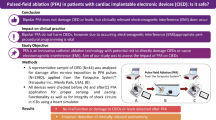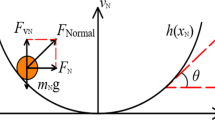Abstract
Cardiac alternans, a beat-to-beat alternation in action potential duration (APD), can lead to fatal arrhythmias. During periodic pacing, changes in diastolic interval (DI) depend on subsequent changes in APD, thus enhancing cardiac instabilities through a ‘feedback’ mechanism. Recently, an anti-arrhythmic Constant DI pacing protocol was proposed and shown to be effective in suppressing alternans in 0D and 1D in silico studies. However, previous experimental validation of Constant DI pacing in the heart has been unsuccessful due to the spatio-temporal complexity of 2D cardiac tissue and the technical challenges in its real-time implementation. Here, we developed a novel closed loop system to detect T-waves from real-time ECG data, enabling successful implementation of Constant DI pacing protocol, and performed high-resolution optical mapping experiments on isolated whole rabbit hearts to validate its anti-arrhythmic effects. The results were compared with: (1) Periodic pacing (feedback inherent) and (2) pacing with heart rate variability (HRV) (feedback modulation) introduced by using either Gaussian or Physiological patterns. We observed that Constant DI pacing significantly suppressed alternans in the heart, while maintaining APD spatial dispersion and flattening the slope of the APD restitution curve, compared to traditional Periodic pacing. In addition, introduction of HRV in Periodic pacing failed to prevent cardiac alternans, and was arrhythmogenic.






Similar content being viewed by others
References
Banville, I., and R. A. Gray. Effect of action potential duration and conduction velocity restitution and their spatial dispersion on alternans and the stability of arrhythmias. J Cardiovasc. Electrophysiol. 13(11):1141–1149, 2002.
Cherry, E. M. Distinguishing mechanisms for alternans in cardiac cells using constant-diastolic-interval pacing. Chaos 27(9):093902, 2017.
Christini, D. J., and J. J. Collins. Using chaos control and tracking to suppress a pathological nonchaotic rhythm in a cardiac model. Phys. Rev. E. 53(1):R49–R52, 1996.
Christini, D. J., M. L. Riccio, C. A. Culianu, J. J. Fox, A. Karma, and R. F. Gilmour, Jr. Control of electrical alternans in canine cardiac purkinje fibers. Phys. Rev. Lett. 96(10):104101, 2006.
Echebarria, B., and A. Karma. Spatiotemporal control of cardiac alternans. Chaos 12(3):923–930, 2002.
Fox, J. J., J. L. McHarg, and R. F. Gilmour, Jr. Ionic mechanism of electrical alternans. Am. J. Physiol. Heart Circ. Physiol. 282(2):H516–H530, 2002.
Garzón, A., R. O. Grigoriev, and F. H. Fenton. Model-based control of cardiac alternans on a ring. Phys. Rev. E Stat. Nonlinear Soft Matter Phys. 80(2):021932, 2009.
Garzón, A., R. O. Grigoriev, and F. H. Fenton. Model-based control of cardiac alternans in Purkinje fibers. Phys. Rev. E Stat. Nonlinear Soft Matter Phys. 84(4):041927, 2011.
Garzón, A., R. O. Grigoriev, and F. H. Fenton. Continuous-time control of alternans in long Purkinje fibers. Chaos 24(3):033124, 2014.
Gilmour, Jr, R. F. Electrical restitution and ventricular fibrillation: negotiating a slippery slope. J. Cardiovasc. Electrophysiol. 13:1150–1151, 2002.
Hall, K., D. J. Christini, M. Tremblay, J. J. Collins, L. Glass, and J. Billette. Dynamic control of cardiac alternans. Phys. Rev. Lett. 78:4518, 1997.
Hall, G. M., and D. J. Gauthier. Experimental control of cardiac muscle alternans. Phys. Rev. Lett. 88(19):198102, 2002.
Jordan, P. N., and D. J. Christini. Adaptive diastolic interval control of cardiac action potential duration alternans. J. Cardiovasc. Electrophysiol. 15(10):1177–1185, 2004.
Kanu, U. B., S. Iravanian, R. F. Gilmour, and D. J. Christini. Control of action potential duration alternans in canine cardiac ventricular tissue. IEEE Trans. Biomed. Eng. 58(4):894–904, 2011.
Karma, A. Electrical alternans and spiral wave breakup in cardiac tissue. Chaos 4(3):461–472, 1994.
Kulkarni, K., R. Visweswaran, X. Zhao, and E. G. Tolkacheva. Characterizing spatial dynamics of bifurcation to alternans in isolated whole rabbit hearts based on alternate pacing. Biomed. Res. Int. 2015:170768, 2015.
Malik, M. Heart rate variability. Ann. Noninvasive Electrocardiol. 1:151–181, 1996.
McIntyre, S. D., V. Kakade, Y. Mori, and E. G. Tolkacheva. Heart rate variability and alternans formation in the heart: the role of feedback in cardiac dynamics. J. Theor. Biol. 350:90–97, 2014.
Otani, N. F. Theory of the development of alternans in the heart during controlled diastolic interval pacing. Chaos 27(9):093935, 2017.
Rappel, W. J., F. Fenton, and A. Karma. Spatiotemporal control of wave instabilities in cardiac tissue. Phys. Rev. Lett. 83:456, 1999.
Riccio, M. L., M. L. Koller, and R. F. Gilmour. Electrical restitution and spatiotemporal organization during ventricular fibrillation. Circ. Res. 84(8):955–963, 1999.
Sato, D., and C. E. Clancy. Cardiac electrophysiological dynamics from the cellular level to the organ level. Biomed. Eng. Comput. Biol. 5:69–75, 2013.
Sookan, T., and A. J. McKune. Heart rate variability in physically active individuals: reliability and gender characteristics. Cardiovasc. J. Afr. 23(2):67–72, 2012.
Stauss, H. M. Heart rate variability. Am. J. Phys. Regul. Integr. Comp. Physiol. 285(5):R927–R931, 2003.
Tolkacheva, E. G., M. M. Romeo, M. Guerraty, and D. J. Gauthier. Condition for alternans and its control in a two-dimensional mapping model of paced cardiac dynamics. Phys. Rev. E Stat. Nonlinear Soft Matter Phys. 69(3 Pt 1):031904, 2004.
Tolkacheva, E. G., and X. Zhao. Nonlinear dynamics of periodically paced cardiac tissue. Nonlinear Dyn. 68:347–376, 2012.
Tse, G., S. T. Wong, V. Tse, Y. T. Lee, H. Y. Lin, and J. M. Yeo. Cardiac dynamics: alternans and arrhythmogenesis. J. Arrhythm. 32(5):411–417, 2016.
Visweswaran, R., S. D. McIntyre, K. Ramkrishnan, X. Zhao, and E. G. Tolkacheva. Spatiotemporal evolution and prediction of [Ca(2+)]i and APD alternans in isolated whole rabbit hearts. J. Cardiovasc. Electrophysiol. 24(11):1287–1295, 2013.
Watanabe, M., N. F. Otani, and R. F. Gilmour, Jr. Biphasic restitution of action potential duration and complex dynamics in ventricular myocardium. Circ. Res. 76(5):915–921, 1995.
Wu, R., and A. Patwardhan. Mechanism of repolarization alternans has restitution of action potential duration dependent and independent components. J. Cardiovasc. Electrophysiol. 17(1):87–93, 2006.
Zlochiver, S., C. Johnson, and E. G. Tolkacheva. Constant DI pacing suppresses cardiac alternans formation in numerical cable models. Chaos 27(9):093903, 2017.
Acknowledgments
This study was funded by the National Institute of Health F31HL129544 (to S.W.L.) and R21HL128790 (to E.G.T.), National Science Foundation CAREER PHY-125541 and DCSD 1662250. This work was conducted as a part of the Prediction and Control of Cardiac Alternans Working Group at the National Institute for Mathematical and Biological Synthesis, sponsored by the National Science Foundation through NSF Award #DBI-1300426.
Conflict of interest
The authors declare no conflict of interest.
Author information
Authors and Affiliations
Corresponding author
Additional information
Associate Editor Ellen Kuhl oversaw the review of this article.
Electronic supplementary material
Below is the link to the electronic supplementary material.
Rights and permissions
About this article
Cite this article
Kulkarni, K., Lee, S.W., Kluck, R. et al. Real-Time Closed Loop Diastolic Interval Control Prevents Cardiac Alternans in Isolated Whole Rabbit Hearts. Ann Biomed Eng 46, 555–566 (2018). https://doi.org/10.1007/s10439-018-1981-2
Received:
Accepted:
Published:
Issue Date:
DOI: https://doi.org/10.1007/s10439-018-1981-2




